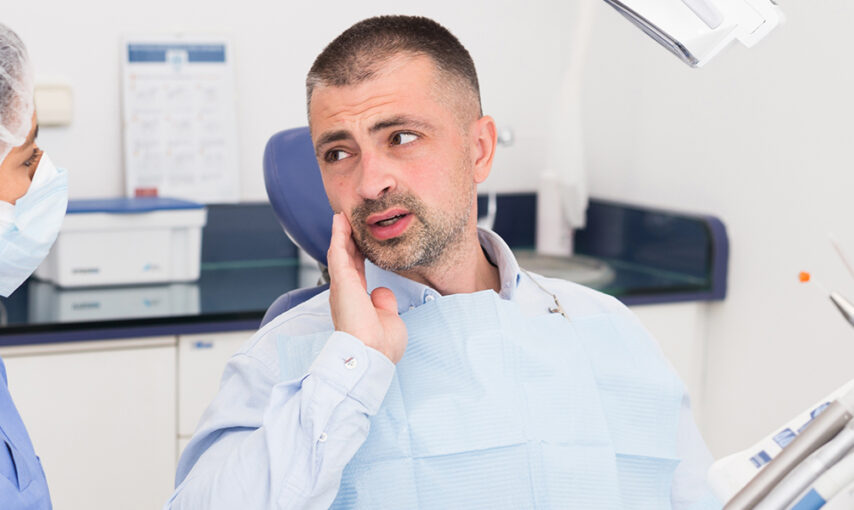Tooth extraction is a routine dental treatment used to address issues like severe decay, infection, or overcrowded teeth. However, the pain and discomfort that follow are often a concern for many patients. To guarantee a smooth recovery following tooth extraction, effective pain management is crucial. Fortunately, various pharmacological and non-pharmacological strategies are available to help manage pain and promote healing. This article explores these strategies and offers tips for a smooth recovery.
Understanding Pain After a Tooth Extraction
It is expected that you will experience some discomfort after a tooth extraction. The pain typically peaks within 24-48 hours after the procedure and begins to subside after a few days. The pain level varies depending on the extraction’s complexity, overall health, and pain tolerance. During recovery, you might also notice swelling, bruising, or bleeding, but these symptoms usually resolve within a few days.
Effective Pharmacological Strategies for Pain Relief
Pain relief after a tooth extraction is crucial for a smooth recovery. Here are some effective pharmacological options that can help manage discomfort:
- NSAIDs and Acetaminophen
One of the most effective combinations for post-extraction pain relief is using ibuprofen (NSAID) along with acetaminophen (Tylenol). Ibuprofen (200-400 mg) combined with acetaminophen (500-1000 mg) provides strong pain relief and is often more effective than opioids. This combination can significantly reduce discomfort for patients with more complex extractions, such as wisdom teeth.
- Ibuprofen: An anti-inflammatory that helps reduce pain and swelling.
- Acetaminophen: Relieves pain but does not have the anti-inflammatory effects of ibuprofen.
If you are looking for tooth extraction treatment near you, your dentist can recommend the most suitable medications based on your needs.
- Preoperative Analgesics
Pain-relieving medications like ibuprofen or acetaminophen before the extraction can help minimize pain afterward. Preoperative analgesics have been found to reduce postoperative pain, especially in children. Discuss this option with your dentist in advance, as it may help with more comfortable healing post-procedure.
- Preemptive pain relief: Helps reduce pain intensity after the procedure.
- Effective for children: This can be helpful in pediatric extractions to ease recovery.
Non-Pharmacological Strategies for Managing Pain
While medications are effective, non-pharmacological methods can also reduce discomfort after a tooth extraction. These strategies are natural and easy to incorporate into your recovery routine.
- Cold Compresses
Applying a cold compress to the outside of your cheek near the extraction site is an excellent way to reduce swelling and pain. Cold therapy constricts blood vessels, which reduces inflammation and alleviates discomfort.
- Cold compress for pain relief: Helps with both swelling and pain reduction.
- Timing: Apply for 15-20 minutes every couple of hours during the first 24 hours after extraction.
Using cold compresses remedy is a simple and effective technique for managing pain after a procedure, and it complements dental clinic care for dental extractions.
- Herbal Remedies
Herbal patches and natural remedies effectively manage mild to moderate pain after a tooth extraction. Transdermal herbal patches release herbal ingredients slowly, providing localized pain relief. Some herbs, such as clove oil, also have analgesic properties and can help ease pain when applied directly to the affected area.
- Herbal patches: Offer natural, non-invasive pain relief.
- Clove oil: Known for its numbing effects, it can help manage mild pain.
These natural methods provide extra comfort during your recovery and can complement more traditional treatments.
Additional Considerations for Pain Relief
Other strategies, in addition to medications and natural remedies, may aid in the management of pain and speed up recovery.
- Low-Level Laser Therapy (LLLT)
LLLT is a treatment that uses light energy to promote tissue healing and minimize pain. While research is still ongoing, LLLT shows promise in decreasing postoperative discomfort and speeding up recovery time. It can be a useful adjunct for patients seeking alternative ways to manage pain.
- Laser therapy for healing: Can reduce inflammation and pain.
- Accelerates recovery: Helps tissues heal more quickly after extractions.
- Distraction Techniques and Virtual Reality
Techniques such as enjoying music, watching your favorite shows, or immersing yourself in virtual reality can help minimize pain by keeping your mind occupied. This may be especially useful for patients who experience anxiety or fear during dental procedures.
- VR for pain relief: Provides a calming distraction during recovery.
- Distraction techniques: Engaging the mind in other activities can reduce the focus on pain.
When to Seek Help?
Although mild to moderate pain after a tooth extraction is normal, there are times when you should seek professional help. If your pain doesn’t subside after a few days, worsens over time, or if you experience dental swelling, fever, or signs of infection, contact your dentist in Calumet City immediately. These could be signs of complications such as a dry socket or an infection, both of which require prompt treatment.
- Monitor symptoms: If pain persists or worsens, seek professional care.
- Signs of infection: Increased swelling, fever, or discharge could indicate infection.
Conclusion
Keeping pain under control following tooth extraction is crucial to a speedy recovery. A combination of effective pain relief strategies, both pharmacological and non-pharmacological, can help reduce discomfort and speed up healing. From medications like ibuprofen and acetaminophen to natural remedies like cold compresses and herbal patches, several options are available to keep you comfortable during recovery. If you’re looking for tooth extraction treatment, a dental clinic for dental extraction can provide the right care to minimize pain and help you recover quickly.
Whether you need help managing mild discomfort or dealing with more significant pain, Family Dental Care – Calumet City is here to offer expert guidance and support. With the right pain management plan, your healing process will be as smooth and comfortable as possible.


